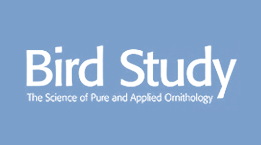Identifying habitat-driven spatial variation in colony size of Herring Gulls Larus argentatus
Capsule: Herring Gull Larus argentatus colonies located along coastlines that are relatively sheltered from wave impact, associated with high intertidal prey availability, and with extensive farmland habitat in the vicinity, have increased in size over the last three decades.
Aims: To investigate potential habitat drivers, associated with local food availability, of variation in Herring Gull colony sizes.
Methods: Colony sizes were compared for 68 Herring Gull colonies across southwest Scotland and Northern Ireland to relate to the availability of potential foraging habitats surrounding each colony.
Results: Changes in Herring Gull colony sizes were spatially clustered, with between-colony differences in colony size related to coastline exposure and amount of farmland within the foraging range. At the end of the census period, colonies located in areas with the greatest availability of intertidal prey and farmland habitat were larger compared to those that were not.
Conclusion: Spatially clustered variation in changes of the size of Herring Gull colonies indicates that neighbouring colonies experienced similar environmental conditions and highlights the importance of intertidal and farmland habitats in buffering against declines. This result emphasizes the need for area-specific management for this species of conservation concern.


